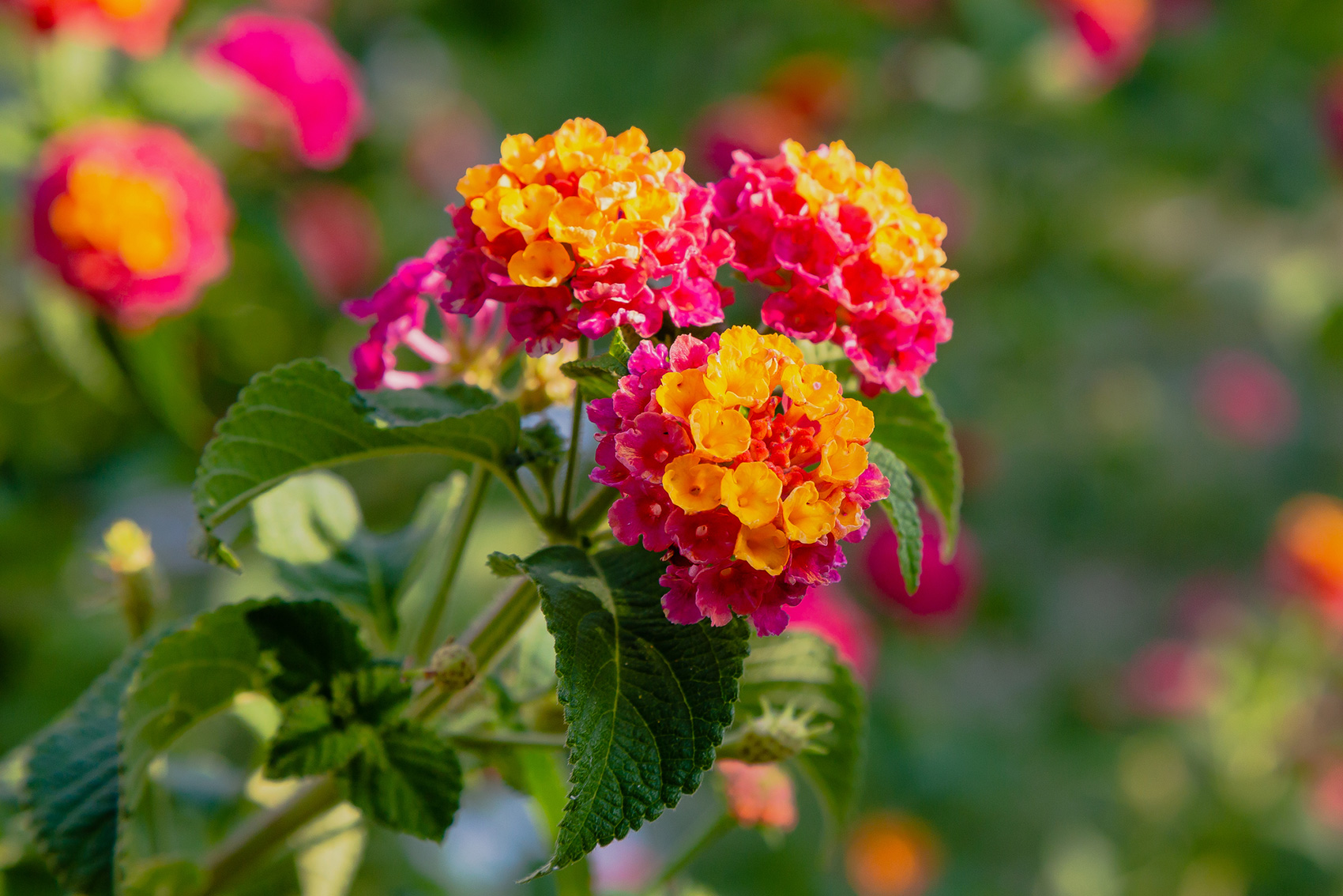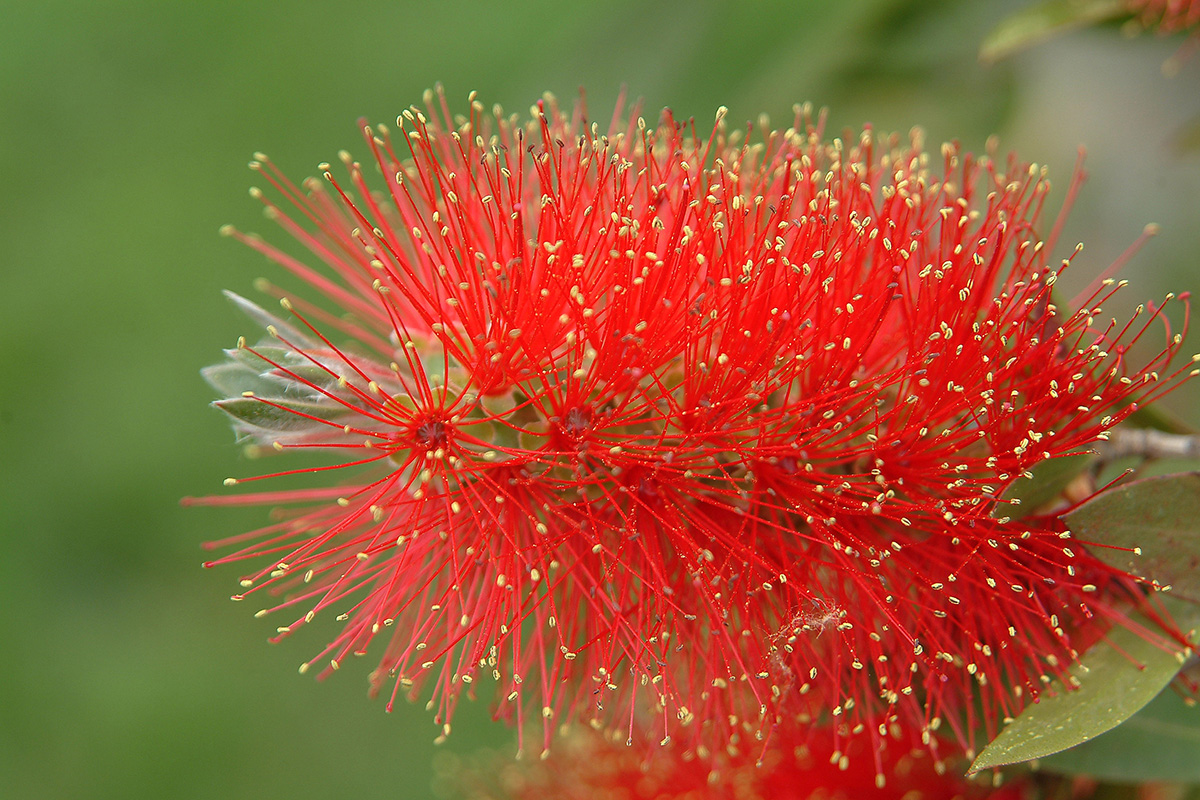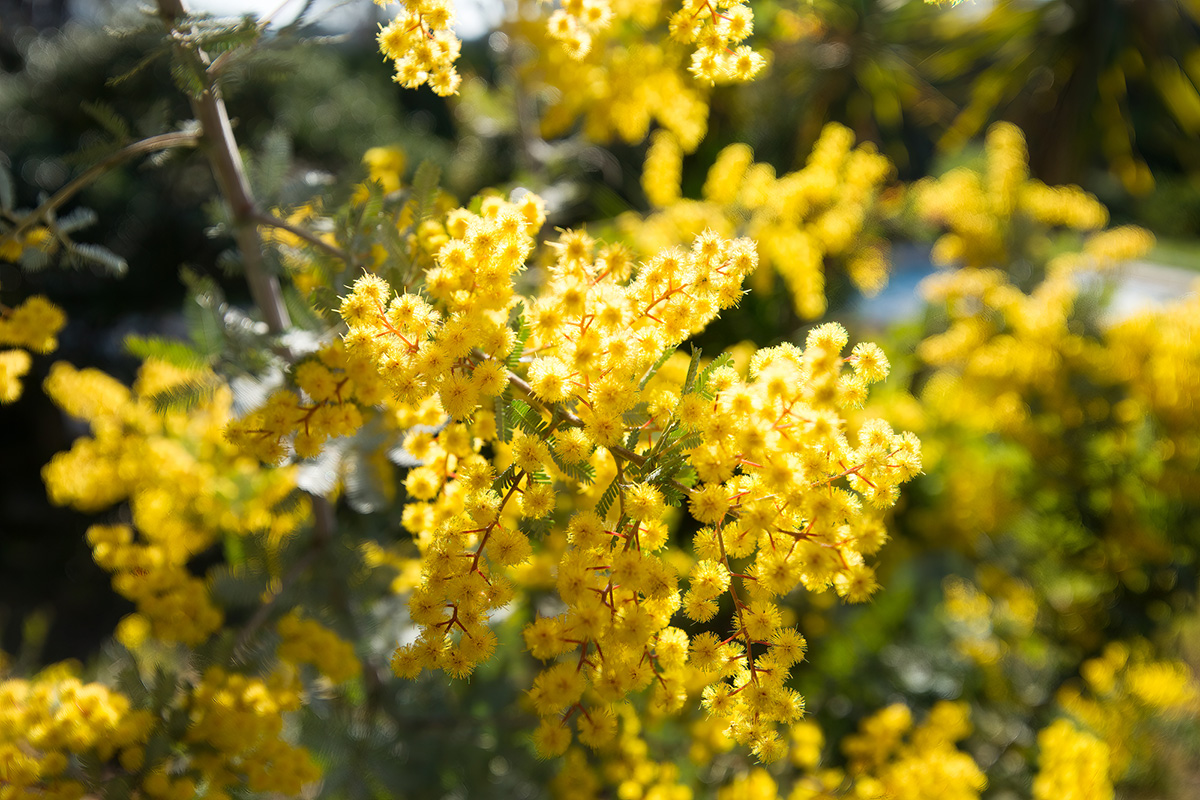With extended droughts, extreme heat, and wildfires, choosing plants for your landscape in California can be tricky. When using native California plants, you can be sure they’ll survive your local climate, and even help you save water. Native plants also benefit local wildlife, such as bees, butterflies, and birds.
Focusing on drought-tolerant plants is vital if you want a beautiful landscape of bright and healthy plants. Luckily, there are dozens of ground covers, shrubs, and trees that thrive in the SoCal heat.
We collected our Favorite 15 Drought Tolerant Plants for SoCal Landscapes.

Ground covers
- Lantana – Lantana plants (shown above) are known for their rounded clusters of small, brightly colored flowers. The flowers can be yellow, orange, white, red, or purple, and often colors are mixed within the same cluster, creating a lovely bicolored effect. Did you know the common Lantana flowers have been shown to have mosquito-repelling properties? The Lantana is a well-known ground cover and makes a good border plant.
- Senecio – Also known as Blue Chalksticks, Senecio is a small ground-hugging succulent with 1-2 inch long blue-green finger-like fleshy leaves and tiny white flowers that bloom in summer. It will root along the stems. Plant in full sun, in well-drained soil. Great for a small-scale ground cover. Native to the Cape of Good Hope in South Africa, it was first introduced into cultivation in 1710.
- Rosemary – Rosemary (salvia rosmarinus) is an evergreen perennial shrub, widely known as an aromatic herb used for culinary purposes. It is also cultivated as an ornamental, often for xeriscaping (reducing or eliminating the need for irrigation) due to its tolerance to drought. Rosemary has a long history of cultivation; the first records of this fragrant plant date back to the early days of Ancient Egypt. A favorite of bees.
- Calandrinia – Calandrinia plants are very easy to care for, as they can tolerate prolonged dry periods. They do not like too much water, especially in the winter. Calandrinia rises out of a rosette of succulent gray-green leaves. The long stems bear many buds on shorter stems, which open sequentially into brilliant purple, poppy-like flowers, their centers filled with golden stamens. Plants are able to grow as short-lived perennials in warm regions but should be grown as annuals elsewhere.
- Tradescantia – Tradescantia is a tender evergreen perennial native to northeast Mexico, grown as an ornamental for its striking purple foliage. Commonly called Purple Heart, this herbaceous plant in the Commelinaceae (spiderwort family) is a low-growing trailer that is hardy in zones 7-10 but is easily grown as an annual or houseplant in colder climates.
Medium Shrubs

- Aloe Striata – A beautiful succulent grown to about 18 inches tall by 2 feet wide with rosettes of flat, broad, pale gray-green leaves that vary in color depending on the amount of sunlight; in hot, full sun the foliage turns pinkish and in more shaded spots they are often bluish-green. The leaves have notable dark narrow lines running lengthwise and toothless, pale reddish, nearly transparent leaves. Starting in late winter into early spring, blooms emerge on up to three 2-foot tall stems that branch and hold clusters of coral-red flowers.
- Little John Dwarf Bottlebrush – A dwarf bottlebrush variety (shown above), Callistemon “Little John” is a beautiful, dense evergreen shrub grown for its dazzling blood-red flowers and evergreen foliage of narrow, blue-green leaves. Blooming throughout most of the year, the elongated flower spikes of this Australian native are surrounded by long bristle-like stems, giving them the look of bottle brushes, hence the name. The blooms are a copious source of nectar for bees and hummingbirds.
- Carex Pansa – A durable spreading sedge that can be used as a lawn substitute or unmowed meadow. It grows 8 -12 inches tall and spreads by rhizomes to form dense colonies of curling dark green foliage. The foliage is evergreen in mild climates and grows well in full sun to partial shade with regular to occasional water. Too much drought causes summer dormancy. Flowers appear in early spring, but are not particularly showy. It is deer-resistant.
- Kniphofia – Also known as red hot poker, kniphofia is a perennial flowering plant that is native to South Africa. Groups of red hot poker are often grown in rich soil in full sunlight. The flowers attract bees, sunbirds, and hummingbirds. This plant is attractive because its bright flowers grow up through the bushes of green leaves, and its conical head is covered with red flowers, which look like a small torch.
Large Shrubs

- Teucrium Fruticans – Also known as the Tree Germander, this shrub is a twiggy evergreen shrub boasting small, aromatic gray-green leaves with silvery white undersides that seem to glow in the landscape. Grows to 3 feet tall by 13 feet wide. The tiny lavender-blue flowers are often buzzing with bees and bloom almost year-round at the branch tips. Native to Mediterranean climates, Tree Germander is extremely durable, tolerating rough wind and salt spray. It thrives in heat and in poor or rocky soils.
- Westringia – Although related to culinary rosemary, coastal rosemary (westringia fruticosa) is not edible. However, it is a hardy shrub, with white hairy flowers, that grows in coastal areas and on sand dunes. Westringia thrives in a variety of soil types and flowers year round.
- Toyon – Toyon produces a berry that has multiple culinary uses. The berries can be cooked and eaten by themselves, or made in various preparations. Some of the most common are jellies, custards, and teas. Toyon typically grows 6-10 feet tall and has a rounded, irregular top. Its leaves are evergreen, alternate, sharply toothed, and have short petals. In the early summer, it produces small, white flowers 6–10 mm diameter in dense terminal combs. Flowering peaks in June.
- Coffeeberry – Coffeeberry is an evergreen shrub that grows fast to 6-15 feet tall. It is native to the Oregon Coast and ranges through most of California into Arizona and Baja. Coffeeberry likes sun to part shade and has low water requirements. It is one of the few bushes that will generally tolerate shade in coastal gardens. The berries turn red, then purple, and then black, and are adored by birds.
Trees

- Western Redbud – Cercis Occidentalis – The Western Redbud is a small, deciduous tree or shrub found in the foothills and mountains of California. In southern California, it’s best to plant them near seasonal streams, springs, or damp or irrigated areas. Additionally, this plant needs a seasoned climate, with a cool winter, to thrive, so it is best not to plant near the immediate coast in southern California. The thin, shiny brown branches bear shiny heart-shaped leaves, which are light green early in the season and darken as they age. The showy flowers develop in the spring, are bright pink or magenta, and grow in clusters all over the shrub, making the plant colorful and noticeable in the landscape. The shrub bears 3-inch long brown legume pods, which are very thin and dry.
- Acacia Baileyana – (Shown above) Bailey acacia grows best in well-lit, well-drained, fertile soil. Acacia is an attractive, low-water shrub or small tree with showy yellow flowers and distinctive, evergreen, feathery foliage. Its roots may be invasive in residential garden settings but are effective as a soil stabilizer. It may require regularly scheduled light top-trimming (but not necessarily shearing) of vigorous top shoots to maintain its height below 25 feet.
The climate is something we often take for granted in Southern California. Summers are hot and beautiful, and winters are usually quite mild too! But everyone knows the weather is dry and that California water is increasing in cost due to years of drought. Improving the landscape by adding drought-tolerant plants will help keep your landscape looking beautiful and low maintenance all year long.

